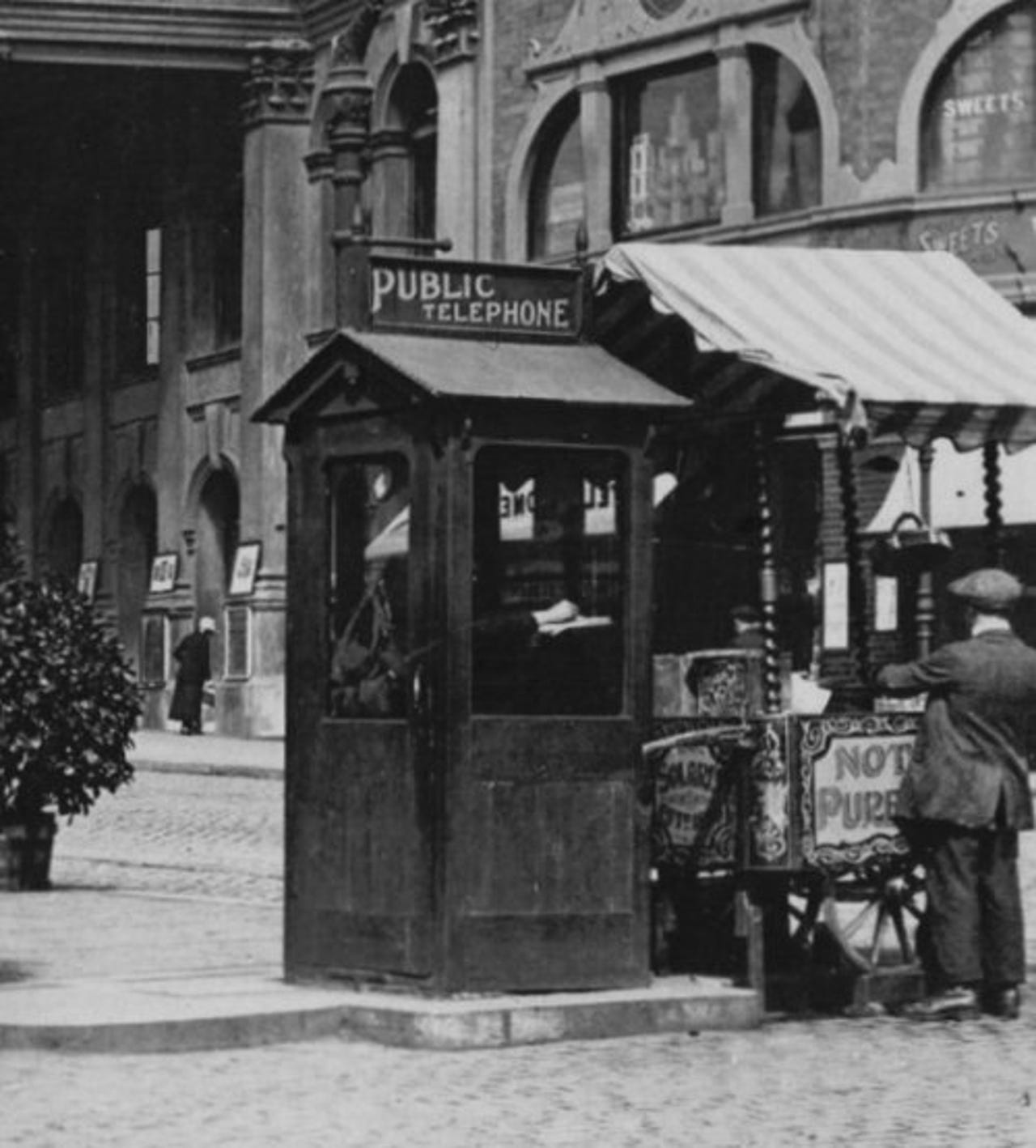Photos: History calling - the many faces of the iconic phone box


Phone box 1908
From wooden huts and thatched mushrooms to glass coffins - via the classic red phone box...
Kids today are unlikely to be regular visitors to pay phones - they've grown up owning their own mobile phones. But the humble phone box has been part of the British landscape for more than 100 years, and it still hasn't entirely gone away.
In that time, the phone booth has changed shape several times - with various design revisions ushered in, including lasting ones such as the iconic red Jubilee phone box but also a few experimental models that only survived a handful of years.
The first ever phone boxes were not standard designs. Pictured above is one of six call-office cabinets which opened in Nottingham in 1908.
These free-standing kiosks were typically wooden, resembling guards' boxes. Some were even manned by an attendant who would admit customers, set up their call via the operator and take payment.
Phone box 1909
With no design standard to follow, early phone boxes took inspiration from existing structures or the environment where they were to be installed. Here's a highly decorative example erected in Folkestone in 1909, based on a rustic arbour or garden gazebo.
More industrial locations, such as docklands regions, had telephones installed in galvanised iron sheds.
K1 Phone box 1925
The first standardised kiosk - known as Kiosk Number 1 or K1, pictured above - was introduced in 1921. The call box was made of reinforced concrete with a red painted wooden door and finished with a decorative finial on top.
The initial K1 kiosks cost £35 each to produce but within a few years they could be made for £15.
Thatched K1 Phone box 1925
Attempts to standardise the look of kiosks did not always go to plan, with some local authorities objecting to the shape or colour as an eyesore.
At Eastbourne, an attempt to make the seafront K1s blend in with the local look resulted in the addition of a large thatched roof, pictured above.
K2 Phone box
After a few years of the K1, the post office decided the next design iteration was due and in 1924 leading architects were asked to submit improved designs. The winning design was the K2, pictured above, created by Sir Giles Gilbert Scott - which had a striking, all-over red colour scheme and was made from cast iron.
The K2 was launched in central London in 1927 and also introduced to some other large provincial areas but was considered too expensive to roll out nationwide. One of the K2's innovations was a ventilation system inside its domed crown. The domed roof itself was said to have been based on the tomb of the arcitect Sir John Soane.
K3 Phone box
As a cheaper alternative kiosk to the K2, Scott also created the K3, pictured above. The K3 followed the K2's design but was mostly made of concrete, a cheaper material than cast iron. The colour scheme was also less flashy, with stone-look cream paint dominating so the box might more easily blend in. Some 10,000 K3s were put up across the UK.
However, concrete proved to be a troublesome material - cracking easily and not standing up to the British weather. The paint also peeled and the cream colour made the kiosk tricky to keep clean. The use of concrete for kiosks was discontinued in 1929.
K4 Post Office Phone box
Here's the all-iron K4 - an ambitious design that incorporated post office functionality by including a stamp vending machine.
The K4 was introduced in 1928, intended chiefly for areas that lacked a sub-post office, but was not a success. Soggy stamps and too much noise from the stamp-dispensing mechanism were among the reasons for its relatively short span.
Fewer than 50 K4s were installed before the design was withdrawn in 1935.
K5 Phone box
The next kiosk - K5 - was a wooden flat-pack design. It was an experimental model that never made it into widespread use.
K6 Red Phone Box
The K6, however, was to become the iconic phone box design that stood the test of time. It was produced in 1936 to mark the silver jubilee of King George V - making the design 75 this year.
While the K6 closely resembles its predecessors, especially the K2, it was the first universal phone kiosk - installed throughout the UK. The K6 was also lighter than previous models, using less iron, and the design of the window bars was changed to improve visibility.
Since 2008, BT has been running an adopt-a-kiosk scheme enabling local residents to pay £1 to adopt a K6 phone box that would otherwise be removed.
K7 Phone Box
The classic red phone box may be the one everyone remembers and the design did endure unchanged for years. But by the 1960s there were calls for a change as people thought the classic was starting to look dated.
Another architect, Neville Conder, was approached to update the phone box. The result was the K7 prototype pictured above, introduced in London in 1962. It was a glass-centric design that also experimented with aluminium.
However, the K7's flirtation with aluminium proved to be its downfall as the metal was no match for the British weather.
K8 Phone Box
The swinging 60s brought another design revision, after another design competition. The K8 kiosk, pictured above, kept the K6's classic red colouring and cast iron but ushered in an undivided glass pane - toughened against vandals. The K8 was introduced in 1968.
KX100 Phone Boxes
The 1980s added accessibility to the list of design criteria for phone booths. In 1985, BT introduced the KX100 kiosk, pictured above, which featured doors that were easier to open than previous models.
Paint and cast iron were out, replaced by large glass panes set with stainless steel and aluminium edging.
KX Plus Phone Boxes
The KX Plus booth, pictured above, was a version of the KX100 designed for more sensitive sites. While the KX Plus is built on the shell of the KX100 it reintroduces the domed crown shape of the K6, along with a splash of classic vermillion.
Internet kiosks
The KX Plus has also been used to house a new type of booth: internet-enabled kiosks. This pair, snapped in southern England in 2005, offer access to the web, alongside the traditional telephone apparatus.